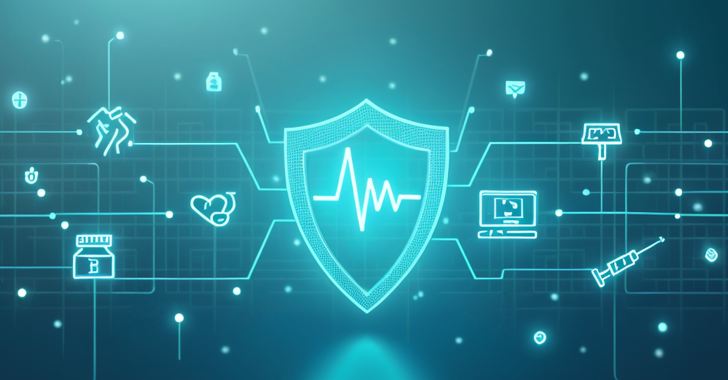The United States Department of Health and Human Services’ (HHS) Office for Civil Rights (OCR) has introduced proposed amendments to the Health Insurance Portability and Accountability Act (HIPAA) of 1996. These changes aim to fortify the cybersecurity measures of healthcare organizations and protect patients’ sensitive data from escalating cyber threats.
This proposal forms a critical part of the broader national initiative to enhance the cybersecurity of critical infrastructure sectors, reflecting growing concerns over the vulnerabilities of healthcare systems to malicious cyber activities.
Strengthening HIPAA for a Cyber-Resilient Future
The proposed rule aims to bolster protections for electronic protected health information (ePHI) by addressing evolving cybersecurity threats. The OCR stated that these changes are designed to modernize the HIPAA Security Rule and provide healthcare organizations with a robust framework to mitigate potential risks.
Key provisions of the new rule include requirements for healthcare entities to:
- Conduct a thorough review of their technology asset inventory and network map.
- Identify and address vulnerabilities that could jeopardize electronic information systems.
- Develop and implement procedures to restore critical data and systems within 72 hours of a cyber incident.
Mandatory Annual Compliance Audits and Encryption Standards
In addition to rapid data recovery protocols, the proposed changes mandate:
- Annual compliance audits to ensure adherence to updated cybersecurity standards.
- Encryption of ePHI both at rest and during transmission to prevent unauthorized access.
- Implementation of multi-factor authentication (MFA) to enhance access controls.
- Deployment of anti-malware protection to guard against malicious software.
- Removal of unnecessary software from systems to minimize potential entry points for attackers.
Advanced Cybersecurity Practices: Network Segmentation and Vulnerability Management
The Notice of Proposed Rulemaking (NPRM) emphasizes proactive measures such as:
- Network segmentation to limit the spread of cyber threats within an organization.
- Technical controls for secure backup and recovery processes.
- Vulnerability scanning at least every six months and penetration testing annually to uncover and address weaknesses in digital infrastructure.
These stringent requirements underscore the OCR’s commitment to safeguarding healthcare organizations against the rising tide of cyberattacks.
Rising Cyber Threats to Healthcare: A Persistent Challenge
The healthcare sector remains a prime target for ransomware attacks, which not only cause financial harm but also disrupt critical medical services. Such disruptions can hinder access to diagnostic tools and patient records, posing severe risks to patient safety.
Microsoft highlighted in an October 2024 report that healthcare organizations are particularly attractive to cybercriminals due to the sensitive nature of their data and the potential for substantial financial payouts. The report further noted that ransomware attacks often impact nearby healthcare facilities, leading to patient surges that strain resources and compromise urgent care delivery.
Alarming Statistics: The Growing Impact of Ransomware
Recent data from cybersecurity firm Sophos reveals a sharp increase in ransomware attacks on healthcare organizations, with 67% of entities affected in 2024 compared to 34% in 2021. The primary causes of these breaches include exploited vulnerabilities, compromised credentials, and phishing emails.
Notably, over half (53%) of the affected organizations paid ransoms to regain access to their data, with the median ransom payment reaching $1.5 million. However, the recovery process remains challenging. Only 22% of healthcare organizations managed to fully recover within a week, a significant drop from 54% in 2022.
Sophos CTO John Shier commented, “The highly sensitive nature of healthcare information and its constant accessibility requirements make the sector an enduring target for cybercriminals. Unfortunately, many healthcare organizations lack adequate preparedness to respond effectively, leading to prolonged recovery times.”
A Global Perspective on Healthcare Cybersecurity
The World Health Organization (WHO) has also raised alarms about the escalating cyber threats to hospitals and healthcare systems. Last month, the organization described ransomware attacks as “issues of life and death,” urging international cooperation to combat this critical threat.
The WHO emphasized that coordinated global efforts are essential to protect healthcare infrastructures and ensure uninterrupted patient care in the face of rising cyber challenges.
Proactive Measures to Secure the Future
The updated HIPAA rules, if finalized, will significantly enhance the resilience of healthcare organizations against cyberattacks. By prioritizing rapid data restoration, regular compliance audits, and advanced security measures like MFA and vulnerability scanning, these changes aim to create a safer digital environment for healthcare operations.
For healthcare organizations, the proposed amendments highlight the urgent need to invest in robust cybersecurity practices. By adopting these measures, they can not only safeguard sensitive patient data but also ensure uninterrupted delivery of critical medical services in an increasingly digitalized world.
The proposed HIPAA updates mark a pivotal step toward securing the healthcare sector against the ever-evolving cyber threats, ultimately prioritizing patient safety and data protection.

